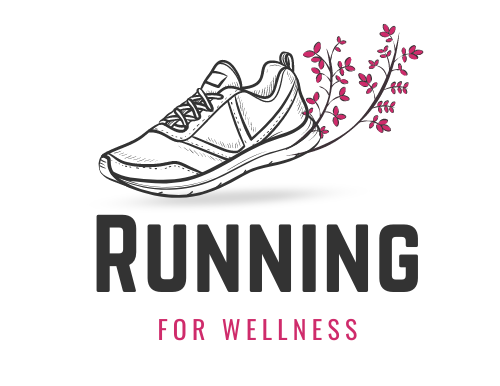Heart rate zones play an essential role in guiding training efforts and maximizing fitness outcomes.
Zone 2 cardio has gained significant traction among both elite athletes and everyday fitness enthusiasts.
Contrary to the common belief that harder is always better, lower-intensity efforts can deliver some of the most impactful and sustainable benefits in endurance training.
Table of Contents
ToggleWhy Zone 2 Matters?
Zone 2 training targets specific energy systems in the body that prioritize fat as a primary fuel source.
At this intensity, the body maximizes fat oxidation while minimizing the reliance on glycogen, delaying fatigue and preserving valuable energy stores.
Maintaining exercise at this level ensures athletes stay below the aerobic threshold, which helps in avoiding lactate buildup that causes early exhaustion.
Mitochondria, the powerhouses of cells, thrive under these conditions. Consistent training in this zone increases mitochondrial density and function, resulting in better cellular energy production.
A stronger aerobic system leads to improved metabolic flexibility, meaning the body becomes more efficient at switching between fat and carbohydrates depending on activity and intensity.
Over time, training in Zone 2 reshapes how energy is produced and consumed, making every movement more efficient and sustainable for longer durations.
Key Benefits of Zone 2 Training

Zone 2 cardio delivers more than just improved stamina, it serves as a smart, sustainable way to elevate physical and mental performance without constant strain.
Operating at a manageable intensity encourages meaningful physiological adaptations that support long-term health goals.
Its consistency-friendly nature makes it suitable for all fitness levels, from seasoned athletes to those easing into cardiovascular training.
1. Builds Aerobic Base
Zone 2 training serves as the foundation of endurance. Working at this level strengthens the heart, increases stroke volume, and enhances capillary density in muscles.
These adaptations improve oxygen delivery and overall aerobic performance.
Athletes find themselves going farther with less effort, thanks to the improved cardiovascular efficiency.
- Boosts endurance capacity
- Strengthens cardiovascular health
- Increases oxygen delivery to muscles
2. Faster Recovery & Less Fatigue
Lower-intensity exercise in Zone 2 places minimal stress on joints, tendons, and muscles, making it an ideal recovery tool.
Unlike high-intensity sessions that require extended recovery periods, Zone 2 allows for frequent training with reduced injury risk.
It also fits perfectly between high-effort sessions or heavy lifting days. For those incorporating performance-enhancing supplements to support recovery and muscle repair, canadapeds.is offers a range of Syn Pharma products tailored for serious athletes.
- Reduces joint and muscle strain
- Helps clear metabolic waste
- Can be done more frequently without burnout
3. Injury Prevention

Sustainable training intensity in Zone 2 reduces the likelihood of overuse injuries.
Consistent effort without overexertion builds durability while preventing common issues such as shin splints, tendonitis, or chronic fatigue.
Many athletes remain in their sport longer by embracing lower-intensity training as a regular part of their routines.
- Encourages long-term sustainability
- Builds muscular and cardiovascular durability
- Helps identify and correct imbalances
4. Supports Longevity
Improved mitochondrial health and metabolic function contribute to long-term well-being.
Regular Zone 2 work has been linked with reduced risks of type 2 diabetes, cardiovascular disease, and other chronic conditions.
As a sustainable and safe training method, it supports overall health for decades, not just seasons.
- Enhances metabolic efficiency
- Supports healthy aging
- Promotes insulin sensitivity
5. Improves Mental Health
Light aerobic activity at Zone 2 intensity promotes steady endorphin release.
The relaxed pace can ease anxiety, improve sleep quality, and help manage symptoms of depression.
Many find it meditative, providing mental clarity and stress relief during or after a session.
- Encourages mood stability
- Lowers cortisol levels
- Improves mental clarity and emotional balance
How to Train in Zone 2
Building an effective Zone 2 training routine doesn’t require elite-level tools or advanced physiology degrees.
It requires consistency, basic knowledge of heart rate mechanics, and a willingness to focus on effort that feels manageable.
Many make the mistake of pushing too hard, assuming more discomfort leads to greater results.
In Zone 2, success comes from staying controlled, patient, and deliberate with each session.
Calculate Your Zone 2 Heart Rate
An effective way to begin is by estimating your Zone 2 range using the formula: 220 minus your age, then multiply that number by 60% and 70% to get the range.
While formulas provide a starting point, each body is different.
Relying on perceived effort, where breathing feels controlled and conversation is possible, is just as valuable.
- Target range: 60–70% of max heart rate
- Conversation pace
- Slight but steady effort
Track with Tools
Heart rate monitors, smartwatches, and fitness apps make it easy to stay within the proper zone.
These tools give instant feedback and help monitor long-term progress.
However, variables like hydration, fatigue, and stress can impact heart rate, so it’s important to listen to your body alongside data.
- Use tools to stay consistent
- Watch for external influences on heart rate
- Blend perceived effort with tech guidance
Zone 2 vs. Other Zones

Every heart rate zone serves a specific physiological purpose, and knowing how each one functions helps shape an efficient and well-balanced training plan.
Rather than treating all efforts the same, smart athletes allocate their time across different zones depending on their goals.
Energy systems, fatigue levels, and adaptation responses shift as intensity increases, which makes it essential to place Zone 2 in context with the others.
Zone 1 is best suited for active recovery, light movement days, and cooldowns. Effort is minimal, breathing is relaxed, and exertion is barely noticeable. While excellent for maintaining circulation and flexibility, it offers little in terms of building cardiovascular strength or endurance capacity.
Zone 2 offers a balanced and sustainable training ground. It produces aerobic benefits, encourages fat metabolism, and strengthens cardiovascular function without excessive strain. Consistent work at this intensity creates the foundation that allows athletes to handle harder efforts in higher zones with less fatigue and lower injury risk.
Zone 3 often becomes a trap for many recreational athletes. It’s intense enough to create fatigue but not intense enough to trigger significant training gains. Stuck between aerobic and anaerobic systems, this “gray zone” produces limited returns while increasing wear on the body.
Zones 4 and 5 deliver sharp performance gains through interval training, speed work, and race simulation. These efforts activate anaerobic pathways, demanding high output and leading to quicker improvements in power and speed. However, they also carry a greater risk of overtraining, require longer recovery periods, and are not sustainable on a daily basis.
- Zone 1: recovery-focused, very light effort
- Zone 2: endurance-building, low-risk, high return over time
- Zone 3: moderate intensity, high fatigue, low reward
- Zones 4/5: high-intensity, performance driven, greater recovery need
Final Thoughts
Training in Zone 2 offers a low-risk, highly rewarding approach to improving cardiovascular health and endurance.
Its simplicity, accessibility, and long-term benefits make it an essential element for anyone looking to train smarter, not just harder.
Progress requires consistency, discipline, and a commitment to gradual gains that truly last.
Related Posts:
- How Long Does It Take to Train for a Half Marathon?
- How Can You Start a Career as a Running Coach?
- How Far Is a Half Marathon? Everything You Need to Know
- Should You Run on an Empty Stomach? Pros and Cons Explained
- How To Get Stronger Without Losing Speed And Flexibility
- Lower Back Pain While Running? Here's What You Need to Know







